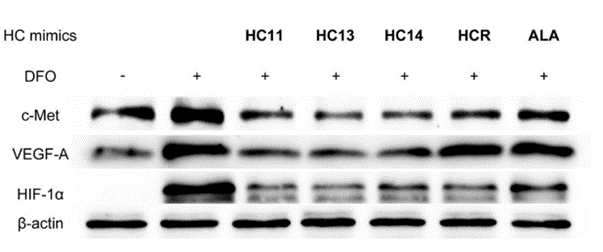Advantages:
- Developed helical mimetics of HIF-1α based on sulfonyl-γ-AA peptides that selectively target HIF-1α to target metastasis and therapy resistance in solid tumors.
- Inhibitors are stable and cell permeable.
- HC11, HC13, and HC14 sulfonyl-γ-AA peptides efficiently inhibit HIF-1α activity and reduce expression of hypoxia-inducible genes.
Summary:
The rapid proliferation of cancer cells leads tumors to outgrow the vasculature networks and creates a low-oxygen environment (hypoxia). In response, cancer cells activate hypoxia-inducible factor-1 (HIF-1), a transcription factor that regulates the expression of more many genes which ultimately promotes rapid tumor progression.
Our researchers successfully designed and synthesized helical mimetics of HIF-1α based on sulfonyl-γ-AA peptides that are more stable than conventional inhibitors and that can effectively bind to p300 and disrupt the HIF-1α/p300 complex formation. Three mimetics called HC11, HC13, and HC14 showed the strongest efficacy inhibit HIF-1α activity and reducing hypoxia-inducible gene expression in HeLa cells. Unlike traditional inhibitors, these peptide mimetics offer enhanced stability and cell-permeability. By mimicking helical domains of proteins involved in critical PPIs, such as HIF-1α/p300, they provide a versatile platform for modulating PPIs. Their ability to mimic chiral and achiral side chains of α-helices expands targeting capabilities, promising breakthroughs in cancer treatment and beyond.

Peptide-based inhibitors effectively decreased the hypoxia-mediated expression of HIF1-α and c-Met and VEGEF-A (HeLa cells).
Desired Partnerships:
- License
- Sponsored Research
- Co-Development